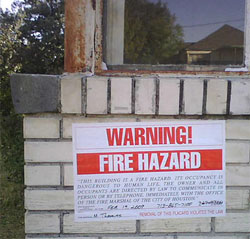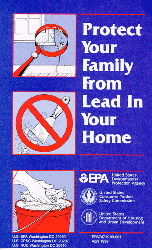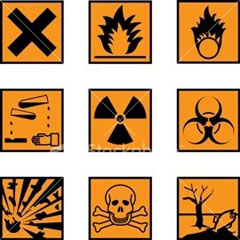Real Estate Environmental Hazards

The law may assess liability of some environmental problems commonly found on the land. The assessment includes hazards to the owners. The buyer is advises to consider the possibility that some environmental problems may reduce the future property’s value and evoke great costs in course of time. The seller has legal duty to inform the buyer of all known environmental hazards.
Environmental hazards fall in two categories: environmental hazards in the home and environmental hazards outside the home.
Environmental Hazards in the Home
This category includes asbestos, lead-based paints, radon, formaldehyde, mold and carbon monoxide.
Asbestos is mineral contained in many construction materials (insulation, in particular). Asbestos may cause asbestosis (lung disease) and cancer. Asbestos is found in all buildings constructed prior to 1978.
Lead-based paint is usual in doors, windows and other wood surfaces. Lead is toxic and accumulates in the body over time, causing lead poisoning, which, in its turn, may cause anemia, constipation and paralysis of wrists and ankles. The Lead-Based Paint Hazard Reduction Act (LBPHRA) defines requirements for real estate containing lead-based paint:
- Sellers and landlords must disclose all known lead hazards to buyers and renters;
- Buyers are given 10-day period to inspect the home;
- Buyers and lessees must be given the “Protect Your Family from Lead in Your Home” pamphlet published by the US Consumer Safety Commission.

More information about this issue may be found at the National Lead Information Center.
Radon is radioactive gas that enters home through openings below the house’s level ground. In course of time, it accumulates and spreads throughout the house. If the house is regularly ventilated, the risk decreases. Presence of radon is accumulated with home radon-detection kits.
Formaldehyde is pungent gas that may cause respiratory problems and irritate skin and eyes. It is known to cause cancer in animals. Older buildings contain radon in insulation and electrical components.
Mold is fungus that grows on organic substances, provided the moisture level is sufficient. The main problem with mold is that it can damage the surface it grows on. In some cases, it may cause allergic reactions or asthma.
Carbon monoxide is lethal poisonous gas with no color and odor. Any flame with insufficient oxygen may create carbon monoxide. Hence, all home furnaces must be regularly ventilated and maintained.

Environmental Hazards outside the Home
Environmental hazards outside the home include groundwater and underground storage tanks. Groundwater is located beneath the earth’s surface and interstices of the ground or forms underground streams. The latter is the main source for drinking water and home water wells. Therefore, it is good to know that groundwater may transport hazardous waste buried in the ground.
Underground storage tanks are used for storing motor oil. In past they stored toxic waste from industrial sites. In course of time, the tanks corrode and start leaking. If groundwater is present, toxic waste from the tanks will pollute it.
The Comprehensive Environmental Response, Compensation, and Liability Act (CERCLA) set up the so-called Superfund worth $9 billion in 1980. The fund is intended to clean up sites containing hazardous waste and to identify potential responsible parties. Environmental Protection Agency (EPA) administers the Superfund.





